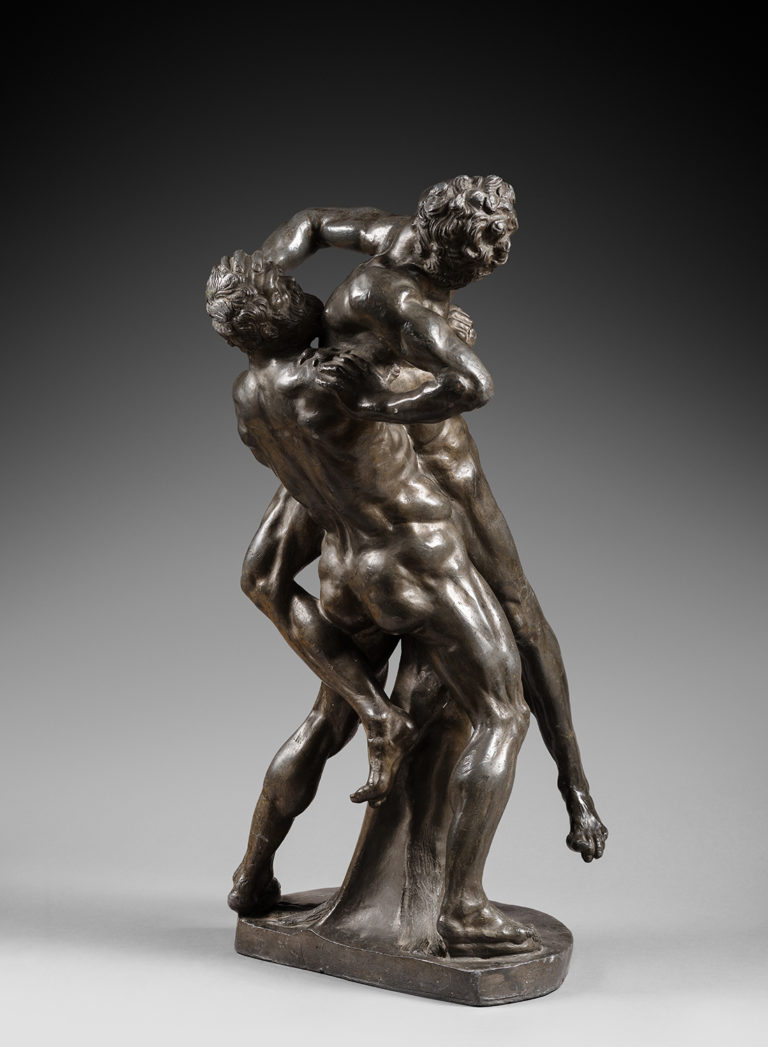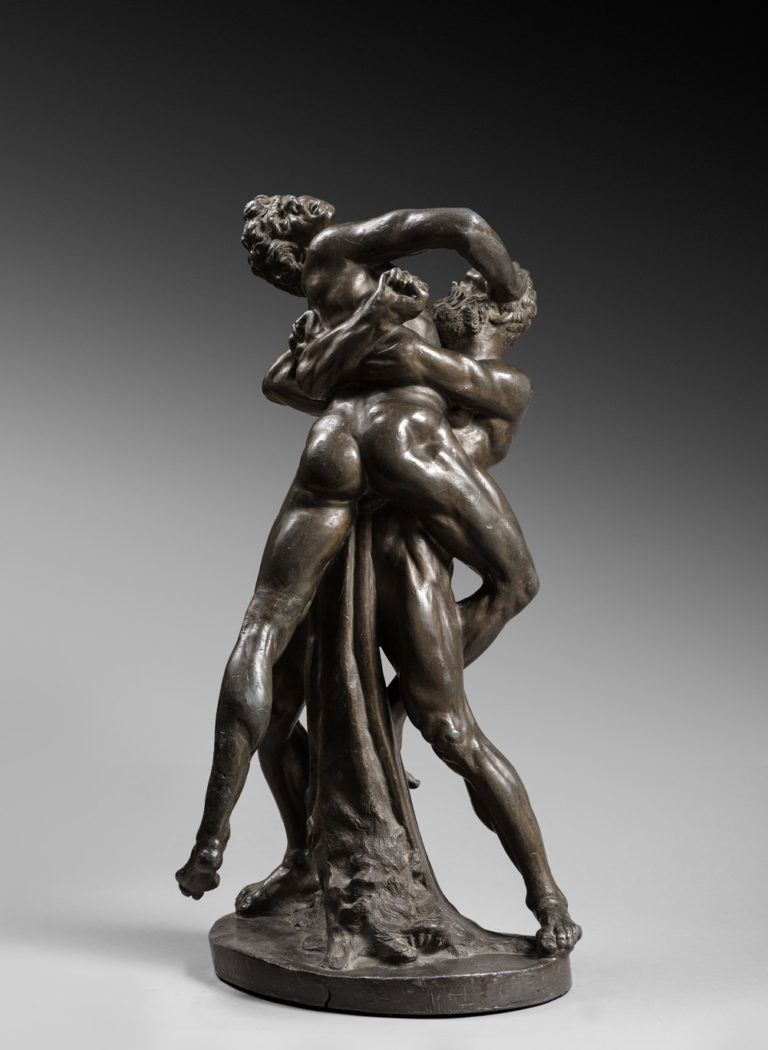Rare group carved in lead.
Italy , late 17th century
D’après le modèle de Stefano MADERNO (1576-1636)
H 60 cm L 31 cm P 26 cm
Hercule soulève Antée afin qu’il ne touche plus le sol.
The story
Antaeus, king of Libya, was the son of Poséidon et de Gaia la Mère-Terre, mais certains affirment que Gaia l’aurait conçu toute seule. Antée était un géant vivant dans une caverne située sous une falaise, qui se nourrissait de chair de lion et dormait à même le sol afin de conserver et d’accroître sa force colossale. Ses facultés à pouvoir prendre des forces lorsqu’il était en contact avec la Terre (Gaïa étant sa mère) le rendaient invincible. Sans pitié, celui-ci forçait les étrangers qui pénétraient sur son territoire à lutter contre lui jusqu’à épuisement, pour ensuite les tuer. Il exhibait ensuite leur dépouille sur le temple paternel.
On ne sait pas si c’est Héraclès, décidé à mettre fin à cette pratique barbare, qui défia Antée ou si c’est Antée qui défia Héraclès. Les deux pugilistes se préparèrent au combat: l’un et l’autre ôtèrent leur peau de lion, puis alors qu’Héraclès s’enduisait d’huile à la manière olympique, Antée se versait du sable chaud sur les membres afin d’accroître son contact avec la terre.
Héraclès avait décidé de ménager ses forces et de fatiguer Antée, mais, après l’avoir projeté sur le sol de tout son long, il fut stupéfait de voir ses muscles régénérer par la Terre-Mère. Les deux adversaires se prirent à nouveau à bras-le-corps et Antée se jetait volontairement sur le sol pour reprendre des forces ; Héraclès, comprenant alors sa manœuvre, le souleva de terre, lui brisa les côtes, et, malgré les terribles gémissements de la Terre-Mère, le maintint en l’air jusqu’à ce qu’il expiât.
La dépouille massive d’Antée fut ensevelie par Héraclès sous la colline du Charf près de Tanger, ville qui aurait été fondée par le fils d’Héraclès, Tingis, et de la femme d’Antée qui se nommait Tingé.

